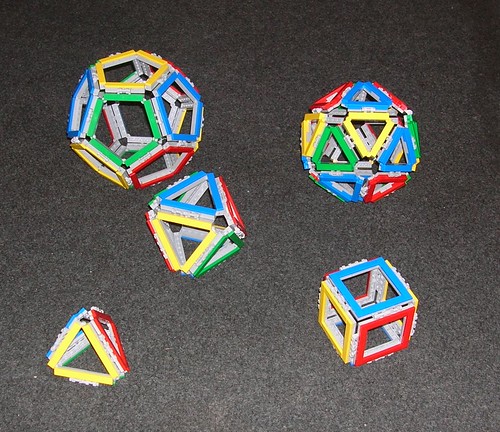
From the Timaeus:
The first will be the simplest and smallest construction, and its element is that triangle which has its hypotenuse twice the lesser side. When two such triangles are joined at the diagonal, and this is repeated three times, and the triangles rest their diagonals and shorter sides on the same point as a centre, a single equilateral triangle is formed out of six triangles ; and four equilateral triangles, if put together, make out of every three plane angles one solid angle, being that which is nearest to the most obtuse of plane angles ; and out of the combination of these four angles arises the first solid form which distributes into equal and similar parts the whole circle in which it is inscribed. The second species of solid is formed out of the same triangles, which unite as eight equilateral triangles and form one solid angle out of four plane angles, and out of six such angles the second body is completed. And the third body is made up of 120 triangular elements, forming twelve solid angles, each of them included in five plane equilateral triangles, having altogether twenty bases, each of which is an equilateral triangle. The one element [that is, the triangle which has its hypotenuse twice the lesser side] having generated these figures, generated no more ; but the isosceles triangle produced the fourth elementary figure, which is compounded of four such triangles, joining their right angles in a centre, and forming one equilateral quadrangle. Six of these united form eight solid angles, each of which is made by the combination of three plane right angles ; the figure of the body thus composed is a cube, having six plane quadrangular equilateral bases. There was yet a fifth combination which God used in the delineation of the universe.
No comments:
Post a Comment